I have sometimes imagined Adam, as he was leaving the garden of Eden, turning to Eve and asking, “What was all that about having to eat our bread by the sweat of our faces?” (Moses 4:25) No doubt they soon discovered the answer to that question. In order to survive physically in their fallen state, they had to put forth serious effort. It is no different with spiritual survival.
In her April 2020 general conference address, Sister Joy D. Jones shared a brief video interview with President Russell M. Nelson and a small group of children. One of the children asked the question, “Is it hard to be a prophet?” President Nelson responded, “Of course it’s hard. Everything to do with becoming more like the Savior is difficult…the Lord loves effort, because effort brings rewards that can’t come without it.” (1)
When President Nelson tells us that “the Lord loves effort,” he is speaking from experience. A few years ago, while studying the prophet’s life, I was impressed by the following story: In 1985, the year after he became an apostle, Elder Nelson received the staggering assignment to open the communist countries of Eastern Europe for the preaching of the gospel. His initial efforts to contact leaders of these nations were stark reminders of the nearly impenetrable nature of “the Iron Curtain.”
Government officials in communist nations had no interest in meeting with a religious man. Elder Nelson often received poor treatment and was viewed with suspicion. It was a major accomplishment just to make an appointment with anyone in political power, yet those appointments were not always honored. But Elder Nelson was no stranger to hard work. Between 1985 and 1991 he traveled to the former Soviet Union twenty-seven times, as well as making dozens of trips to other communist nations.
Sister Beverly Campbell, former director of the Church’s International Affairs office, worked closely with Elder Nelson during this period, and later observed, “From the time Elder Nelson received the assignment to open the doors to the Iron Curtain countries, he aggressively pursued every avenue… He was willing to go anywhere and meet anytime, at any inconvenience or danger to himself.” (2) Finally, in July 1991, he reported to President Ezra Taft Benson that the Church had been established in every Eastern European nation.
Thankfully, the average church member will not be called upon to open entire nations to the preaching of the gospel. Yet, God still expects our best efforts in the smaller stewardships and opportunities of our lives. In recent months, I have reaped the rewards of increased spiritual effort. Last autumn, I gradually grew aware that although I was enjoying the time I spent in the temple as a patron and a worker, it had been far too long since my understanding of the endowment had actually increased. I felt strong spiritual “nudges” to supplement my time inside the temple with increased personal temple study and pondering outside of the temple.
The first elements of temple worship I chose to examine more closely were the symbols incorporated into the architecture and decor. In his book “Endowed with Power,” C. Robert Line states that “…there is a simple, basic architectural design that can be seen in and on… most of our temples. The symbol is that of a circle framed by a square.” (3)

The circle represents heaven, and the square represents earth, or the four corners of the earth. “Simply put,” Line continues, “the temple, like the circle and square, is a place where heaven and earth come together in one.” (4) I was vaguely aware that I’d seen this symbol before on temples, though I could not have said where. While working in the temple just days after studying about the symbol, I stood quietly in an endowment room as the session ended and the last few patrons finished. Glancing at the altar in front of me, I was startled to recognize the symbol of the circle within a square–forty-six of them, to be exact–lightly etched around the altar.
Scanning the rest of the room, I discovered more of the same symbol–some fairly obvious to anyone looking for them, and some quite subtle. In the endowment room that afternoon I counted over one-hundred-twenty “circle within a square” symbols, and since then I’ve discovered even more.
For twenty-five years I have attended this temple but had never given a thought to those symbols. My eyes have passed over them hundreds–perhaps thousands–of times without actually registering what they were or knowing what they represented. Now I see them everywhere: the exterior of the building, the front doors, the doorframes, the recommend desk, the chapel, the Celestial room, even the office.
Now that I recognize this symbol, I’m able to focus on its meaning. Every circle framed by a square is a quiet reminder of Jesus Christ, whose atonement makes the intersection of heaven and earth a reality. If I had not made the spiritual effort to study about the temple in addition to serving inside, I may never have understood what was right in front of me. This discovery caused me to wonder what else I was missing, and has spurred me on to further temple study, enhancing my experience as I participate in temple ordinances.
[Note: Not every temple contains the circle within a square symbol, but there are other symbols in all Latter-day Saint temples.]
Here are a few examples of people who put forth the requisite spiritual effort to yield important results:
Joseph Smith
Amidst the religious excitement and confusion of his day, the prophet Joseph Smith turned to the God-given method for receiving answers: search the scriptures (“I was one day reading the epistle of James”), ponder (“I reflected upon it again and again”), and pray (“I kneeled down and began to offer up the desires of my heart to God”). Joseph’s significant spiritual effort led to receiving a vision of the Father and the Son. (JS History)
King Benjamin
“…there had been false Christs…false prophets, and false preachers and teachers among the people… there having been much contention and many dissensions away unto the Lamanites…Wherefore…king Benjamin, by laboring with all the might of his body and the faculty of his whole soul, and also the prophets, did once more establish peace in the land. (Words of Mormon 1:16,18)
Alma the Younger
“…Behold, I testify unto you that I do know that these things whereof I have spoken are true. And how do ye suppose that I know of their surety?… Behold, I have fasted and prayed many days that I might know these things of myself.” (Alma 5:45-46)
Nephi vs. Laman and Lemuel
I’m fascinated by the contrast between Nephi and his brothers Laman and Lemuel. After their father shared with them his marvelous vision of the tree of life, their responses could not have been more different.
Nephi’s response: “For it came to pass after I had desired to know the things that my father had seen, and believing that the Lord was able to make them known unto me, as I sat pondering in mine heart I was caught away in the Spirit of the Lord…” Through his spiritual efforts of desiring, believing, and pondering, Nephi was rewarded with the same glorious vision his father had seen, as well as the interpretation of many of the symbols in the vision.
Laman and Lemuel’s response: After receiving his own vision, Nephi found his brothers arguing.
“…Ispake unto my brethren, desiring to know of them the cause of their disputations.
And they said: Behold, we cannot understand the words which our father hath spoken
And I said unto them: Have ye inquired of the Lord?
And they said unto me: We have not; for the Lord maketh no such thing known unto us.”
I actually have the word “Duh!” scribbled in my Book of Mormon next to this response from Laman and Lemuel. They never considered that “the Lord [made] no such thing known unto [them]” precisely because they had not inquired of Him. They were not willing to put forth the spiritual effort necessary to receive personal revelation. (1 Nephi 11:1, 1 Nephi 15:6-9)
Though we each have areas where we could focus greater spiritual effort, we may become overwhelmed just thinking about them. But what if we choose just one place to increase our efforts? For instance, what if we struggle to connect with our youth Sunday school class? (I’ll let you guess whether or not I’ve had personal experience in this area…) Possible ways to increase effort in this situation: fast for class members, pray daily for each one by name, remember their birthdays, attend a concert, ballgame, or other event they’re involved in, put their names–and yours–on the temple prayer roll, take time at the beginning of class to let each person share something about his or her week, let them give part of the lesson. Implementing even one or two of the above suggestions can bear fruit.
Where will you focus your spiritual efforts in the coming months? Here are a few ideas:
• Make partaking of the Sacrament a more meaningful experience.
• Improve or begin your “Come, Follow Me” study.
• Choose a specific gospel topic to study, ponder, and apply.
• Get serious about ministering in a more Christlike way.
• Choose a talk from the most recent general conference, study it in depth.
• Prepare spiritually for an upcoming general conference.
• Intentionally replace some social media time with family time or temple/family history work.
• Follow President Nelson’s counsel to end conflict–apply to a specific person or situation. (5)
As in all things, Jesus Christ is the greatest example of one who gave His best efforts spiritually in all situations. His entire ministry was devoted to “…[bringing] to pass the immortality and eternal life of man.” (Moses 1:39) Though we may not see immediate results from our spiritual work, as we embrace and act upon the idea that “the Lord loves effort,” we will eventually be able to say with the prophet Alma, “… the Lord doth give me exceedingly great joy in the fruit of my labors…” (Alma 36:25)
Notes:
- An Especially Noble Calling, April 2020 General Conference, Sister Joy D. Jones, emphasis added.
- Russell M. Nelson, 246-47, Spencer J. Condie.
- Endowed with Power, C. Robert Line.
- ibid.
- The Power of Spiritual Momentum, by Pres. Russell M. Nelson, April 2022 General Conference. https://www.churchofjesuschrist.org/study/general-conference/2022/04/47nelson?lang=eng








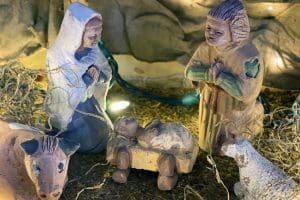





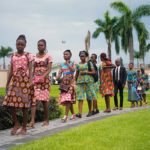

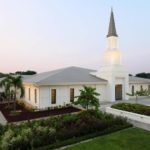
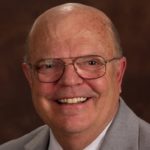
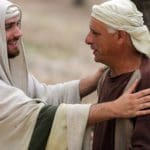
DeniseJune 19, 2022
Excellent article and insights! Well done, Lynne!